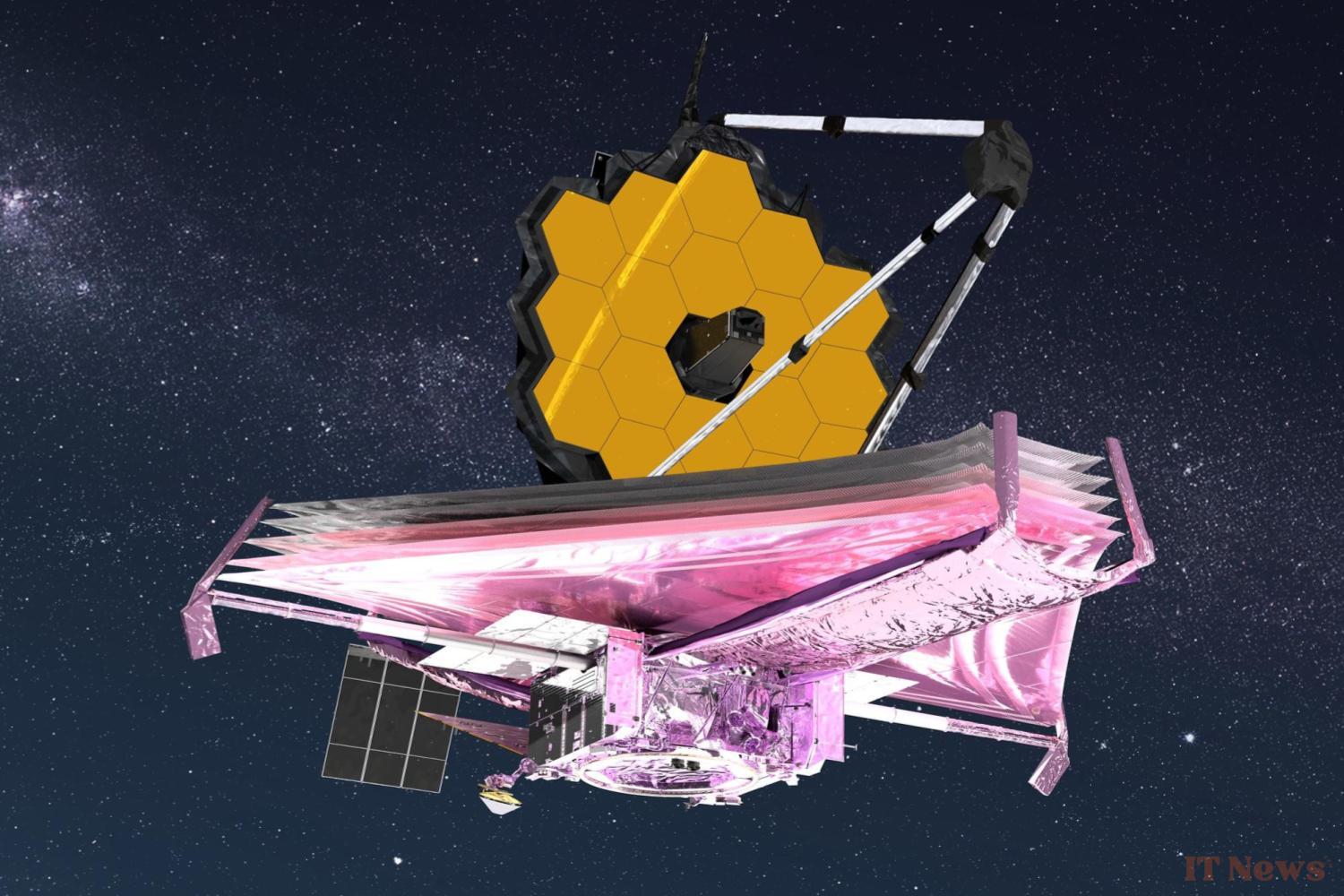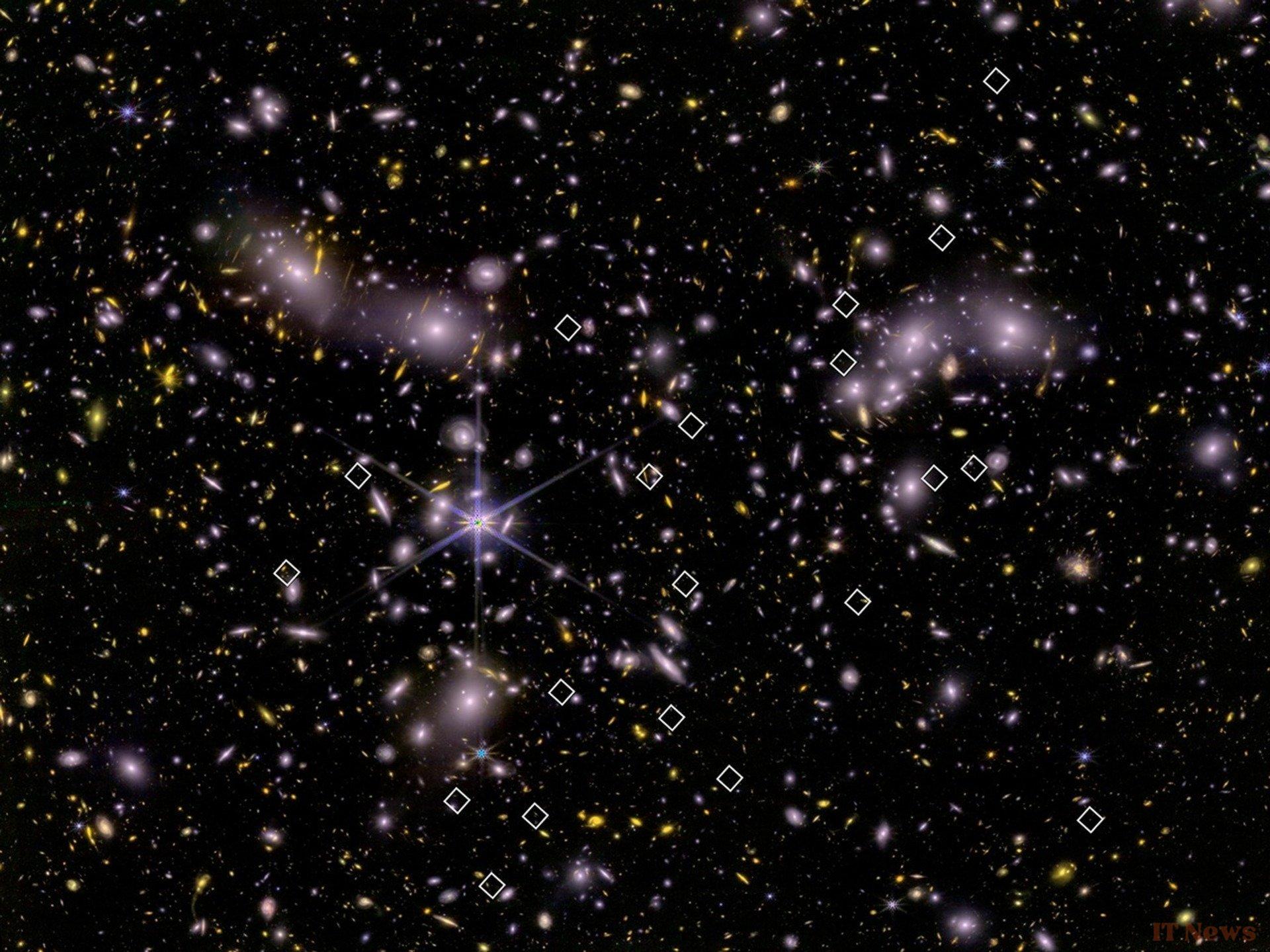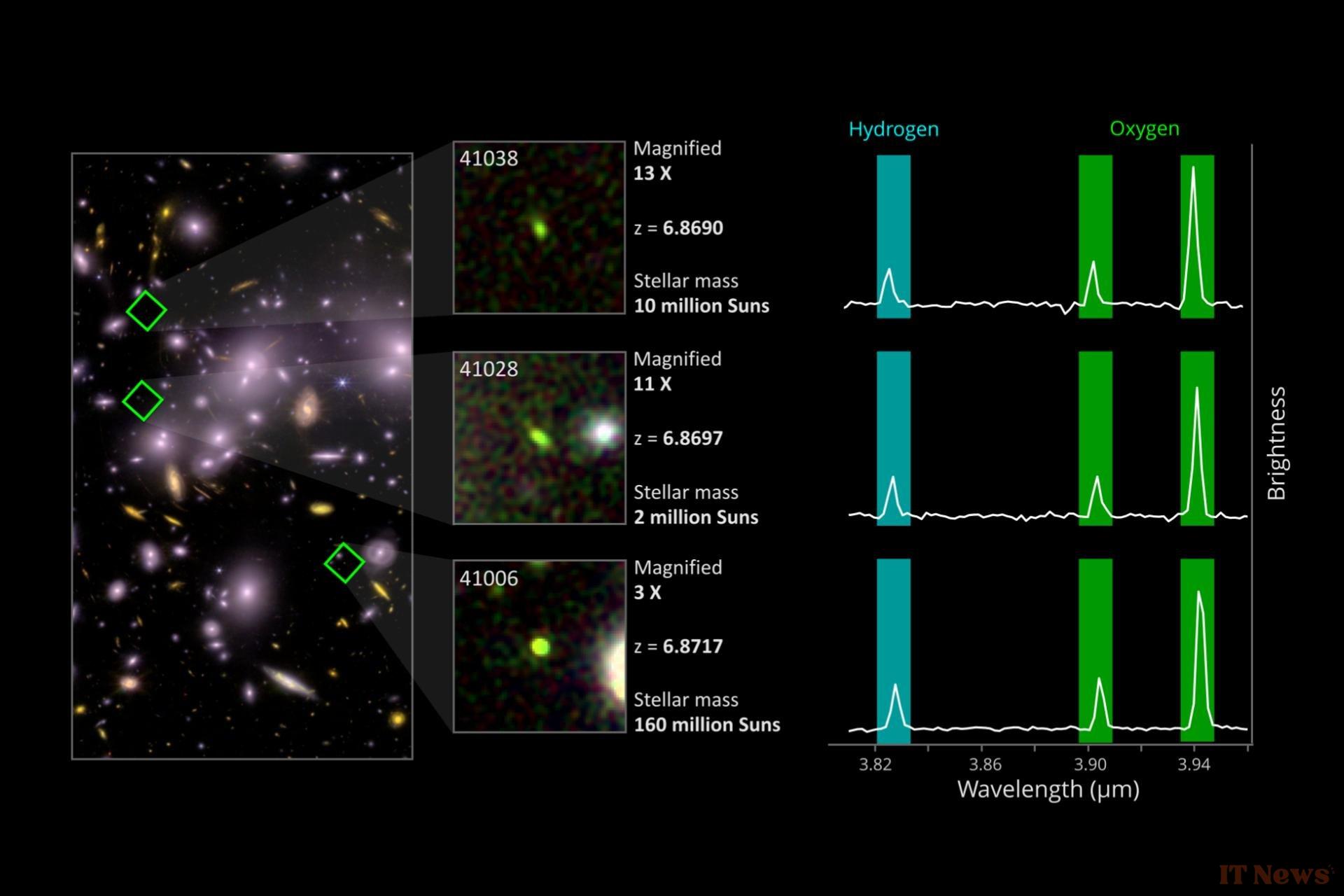Using the James Webb Space Telescope, astronomers have spotted a group of tiny galaxies that, despite their small size, may have been the driving force behind a vast change in our Universe.
Around 13.5 billion years ago, just under 500 million years after the Big Bang, our Universe was nowhere near as diverse as it is today. According to current models, it was simply filled with primordial protons and electrons that then recombined to form the first hydrogen atoms – the simplest and lightest atom in the periodic table.
Let there be light
At that time, the entire cosmos was filled with a vast, rather dense and very homogeneous soup of hydrogen, without a single star – hence the name of this period, often called the Dark Age of the Universe. Only a few tiny local fluctuations in density and temperature, generated by various quantum effects during the expansion of the Universe, disturbed this global isotropy.
These slightly denser regions, containing more matter, also generated a slightly stronger gravitational force, and were therefore more likely to attract even more matter... and so on. Over time, this dynamic got out of control: extremely dense regions ended up appearing and collapsing in on themselves under the effect of their now very strong gravity, leading to the appearance of the first gas clouds, then the first stars and galaxies.
These first celestial bodies played a crucial role in the evolution of our world. By producing ultraviolet radiation, they began to ionize the surrounding hydrogen. This event, called reionization, gradually made our Universe permeable to light, marking the transition from a dark, neutral Universe to a world filled with luminous structures. It thus laid the foundations for the cosmic evolution that formed the Universe as we know it today.
A missing piece of the puzzle
Unfortunately, we know very little about the first galaxies that started this process. They are so old, and therefore remote, that only a few elite observatories, such as the James Webb Space Telescope (JWST), are capable of observing them.
The latter has already trained its lens on several of these primordial galaxies, to the great delight of researchers. But despite these tremendous contributions, several pieces were still missing from the great reionization puzzle.
Astronomers suspected that small, highly active galaxies played a key role in this cosmic upheaval. Current models suggest that because of their low mass, they would have accumulated less opaque hydrogen, thus facilitating the escape of the ultraviolet light that reionized much of the cosmos.
Such objects—by definition very difficult to observe due to their low luminosity and extreme distance—had never been clearly detected at the dawn of the Universe. But that has just changed with the latest JWST observation campaign.
Mini-galaxies, maxi-radiations
In a recent press release, NASA explains that the spearhead of its scientific arsenal has finally identified a large population of 83 galaxies likely to meet these criteria.
Their first remarkable characteristic is their mass, which is particularly low. "These galaxies are so small that it would take between 2,000 and 200,000 of them to have a mass equivalent to that of our Milky Way," explains Sangeeta Malhotra, co-author of the study.
But this mass alone is not enough to make them candidates. The key element is their spectral signature, that is, the nature of the radiation emanating from them: to participate in the reionization process, it is imperative that they emit large quantities of ultraviolet.
And that's precisely what the researchers were pleased to observe. By zooming in on about twenty of these galaxies, the JWST detected the signature of a very rapid star formation process, associated with a massive production of ionizing UV radiation. "When it comes to producing ultraviolet light, these small galaxies are much more efficient than their mass would suggest," explains Isak Wold, co-author of the study.
Based on their number and UV radiation, the authors estimated that this population of mini-galaxies could have provided much of the ultraviolet light needed to ionize all the neutral hydrogen in the Universe, thus launching its great transformation into its current form. In summary, everything indicates that the JWST has finally identified some of the most important players in this great reionization, and this is excellent news for astrophysicists.
It will be very interesting to follow the future work on this theme, because we may be on the verge of taking a real step forward in our understanding of the early Universe.





0 Comments